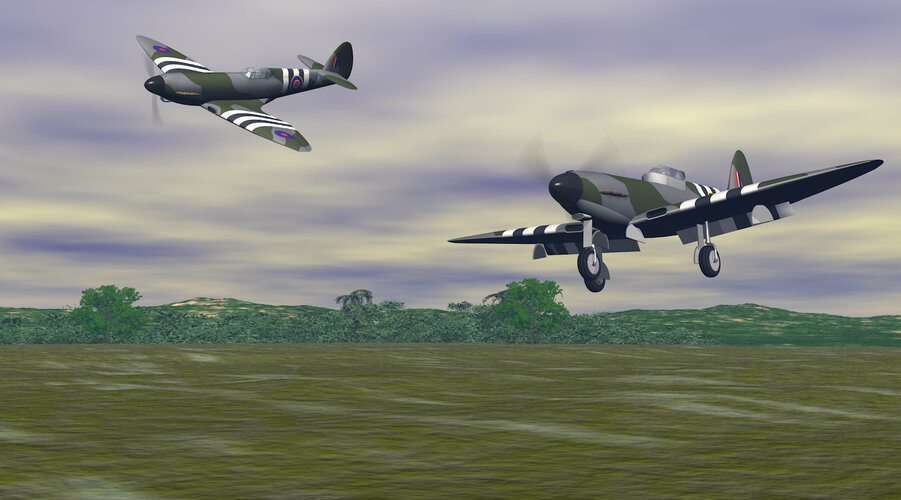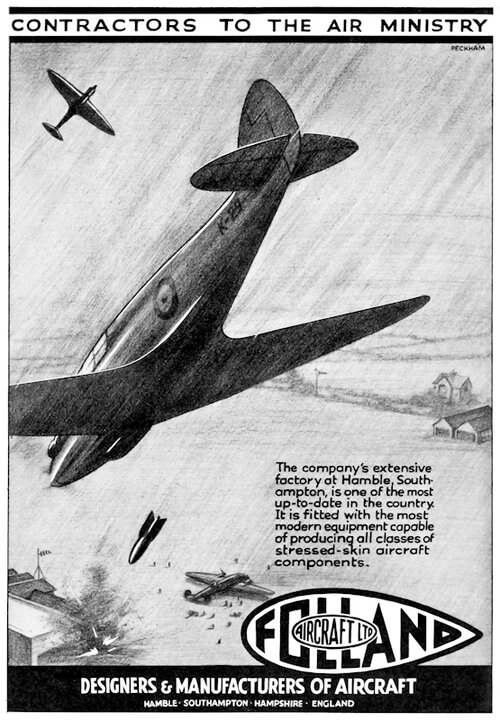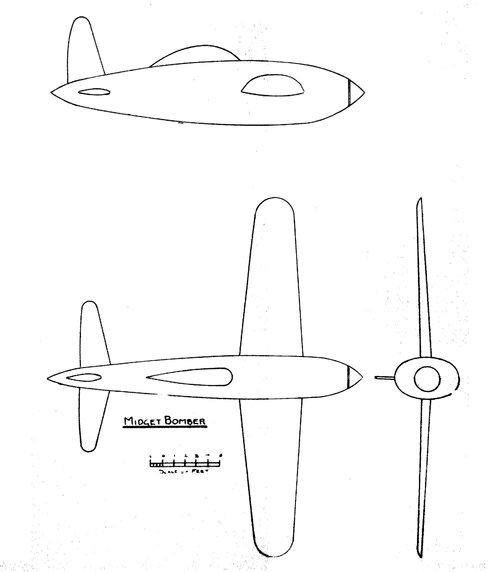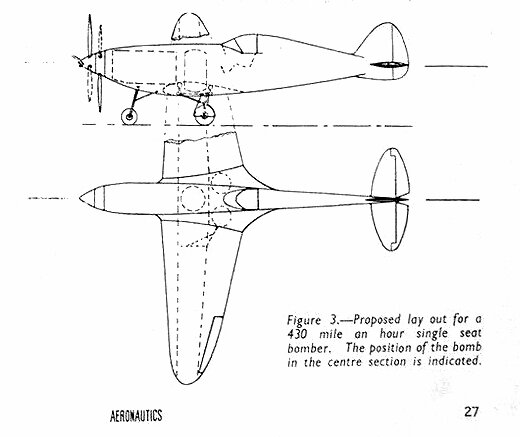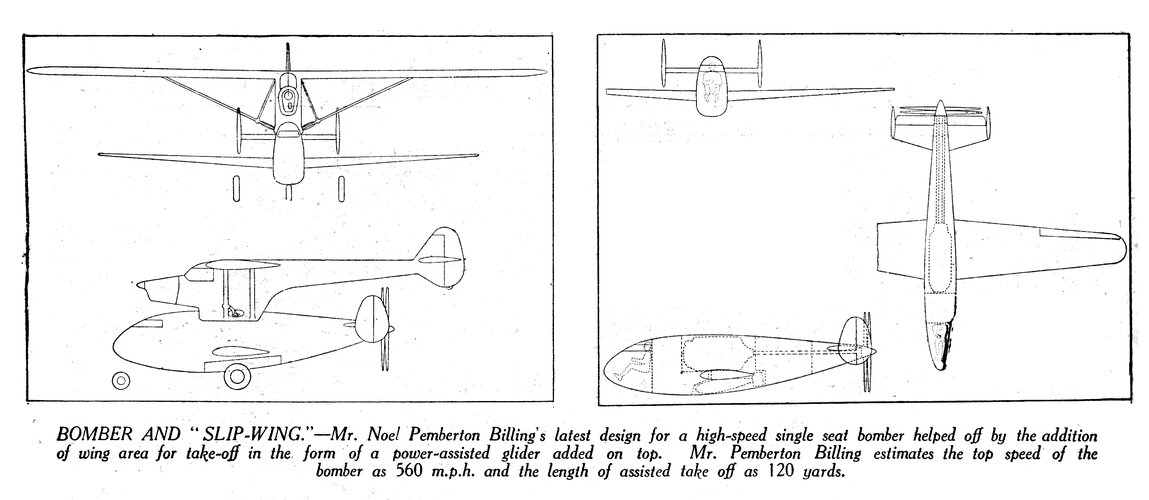- Joined
- 19 October 2012
- Messages
- 1,917
- Reaction score
- 1,766
The route to a high-speed, unarmed or lightly armed bomber for the RAF took ten years to mature until fulfilled, with distinction, by the de Havilland Mosquito. Along the way various formulae of single or twin engine layouts, a crew of one, two or three, bomb loads from 500lb to 3,000lb and a range of up to 3000 miles were considered. Both conventional and Mayo Composite types were suggested.
One advocate for a single-seat, single-engine bomber was Henry Folland, who considered a number of such type in his last year with Gloster and then when he was MD of Follland Aircraft. One was shown in the August 1939 edition of Aeronautics and was an adaptation of a fighter design from 1938, most likely the Fo107. The engine is not specified but from context and nose shape and size it appears to best fit the Napier Sabre (the RR Vulture is less likely). The aircraft carried a single 500lb bomb that was intended to be delivered as a dive bomber. Top speed, after bomb delivery, was estimated as 470mph. One interesting feature was the extendable cockpit to improve the view over the nose when landing or dive bombing.
Here is my rendering of the project, based on the 1939 GA drawings and a 1940 Folland advertisement featuring a revised version.


One advocate for a single-seat, single-engine bomber was Henry Folland, who considered a number of such type in his last year with Gloster and then when he was MD of Follland Aircraft. One was shown in the August 1939 edition of Aeronautics and was an adaptation of a fighter design from 1938, most likely the Fo107. The engine is not specified but from context and nose shape and size it appears to best fit the Napier Sabre (the RR Vulture is less likely). The aircraft carried a single 500lb bomb that was intended to be delivered as a dive bomber. Top speed, after bomb delivery, was estimated as 470mph. One interesting feature was the extendable cockpit to improve the view over the nose when landing or dive bombing.
Here is my rendering of the project, based on the 1939 GA drawings and a 1940 Folland advertisement featuring a revised version.
